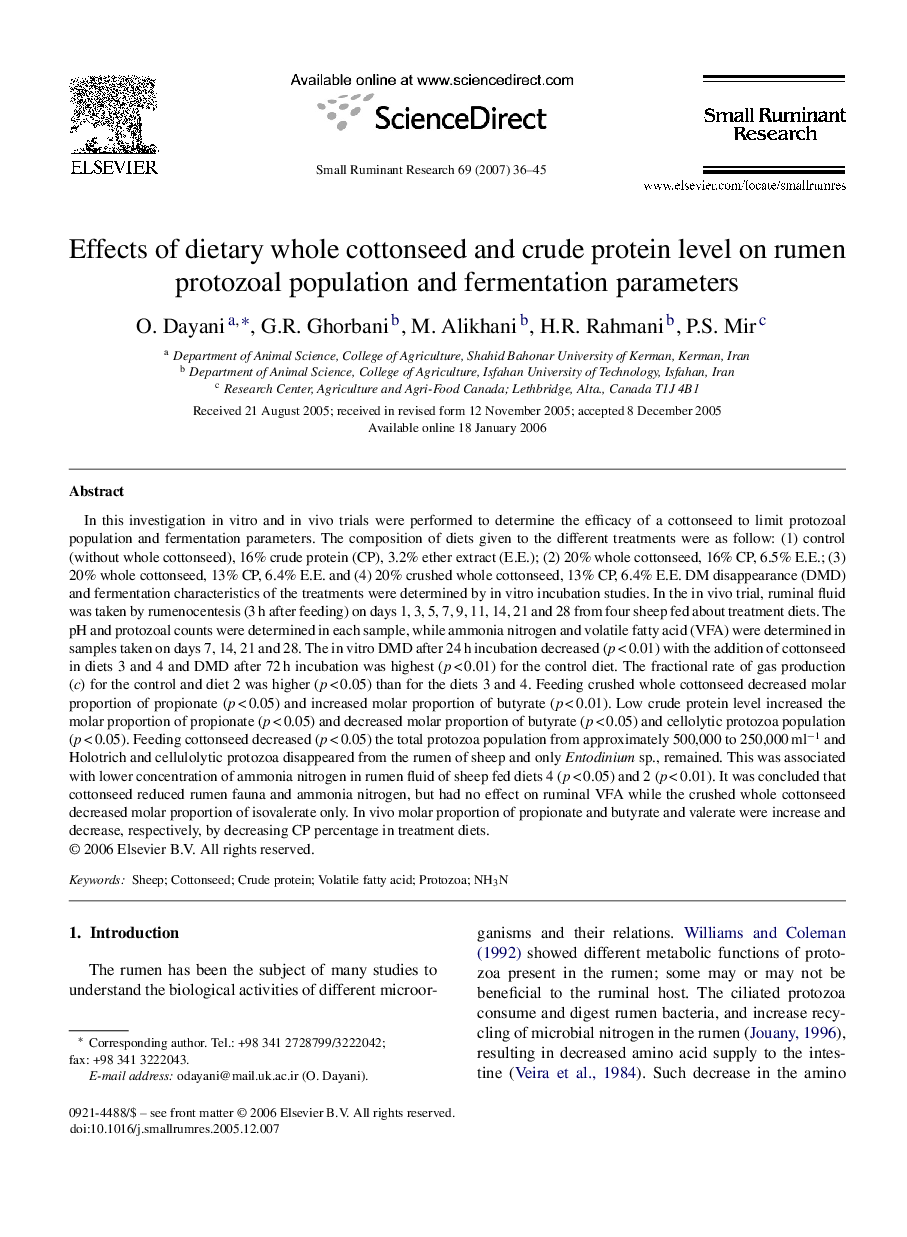| کد مقاله | کد نشریه | سال انتشار | مقاله انگلیسی | نسخه تمام متن |
|---|---|---|---|---|
| 2458285 | 1554423 | 2007 | 10 صفحه PDF | دانلود رایگان |

In this investigation in vitro and in vivo trials were performed to determine the efficacy of a cottonseed to limit protozoal population and fermentation parameters. The composition of diets given to the different treatments were as follow: (1) control (without whole cottonseed), 16% crude protein (CP), 3.2% ether extract (E.E.); (2) 20% whole cottonseed, 16% CP, 6.5% E.E.; (3) 20% whole cottonseed, 13% CP, 6.4% E.E. and (4) 20% crushed whole cottonseed, 13% CP, 6.4% E.E. DM disappearance (DMD) and fermentation characteristics of the treatments were determined by in vitro incubation studies. In the in vivo trial, ruminal fluid was taken by rumenocentesis (3 h after feeding) on days 1, 3, 5, 7, 9, 11, 14, 21 and 28 from four sheep fed about treatment diets. The pH and protozoal counts were determined in each sample, while ammonia nitrogen and volatile fatty acid (VFA) were determined in samples taken on days 7, 14, 21 and 28. The in vitro DMD after 24 h incubation decreased (p < 0.01) with the addition of cottonseed in diets 3 and 4 and DMD after 72 h incubation was highest (p < 0.01) for the control diet. The fractional rate of gas production (c) for the control and diet 2 was higher (p < 0.05) than for the diets 3 and 4. Feeding crushed whole cottonseed decreased molar proportion of propionate (p < 0.05) and increased molar proportion of butyrate (p < 0.01). Low crude protein level increased the molar proportion of propionate (p < 0.05) and decreased molar proportion of butyrate (p < 0.05) and cellolytic protozoa population (p < 0.05). Feeding cottonseed decreased (p < 0.05) the total protozoa population from approximately 500,000 to 250,000 ml−1 and Holotrich and cellulolytic protozoa disappeared from the rumen of sheep and only Entodinium sp., remained. This was associated with lower concentration of ammonia nitrogen in rumen fluid of sheep fed diets 4 (p < 0.05) and 2 (p < 0.01). It was concluded that cottonseed reduced rumen fauna and ammonia nitrogen, but had no effect on ruminal VFA while the crushed whole cottonseed decreased molar proportion of isovalerate only. In vivo molar proportion of propionate and butyrate and valerate were increase and decrease, respectively, by decreasing CP percentage in treatment diets.
Journal: Small Ruminant Research - Volume 69, Issues 1–3, May 2007, Pages 36–45